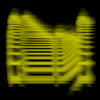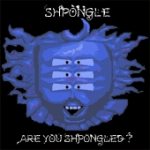| Author
|
An insight in2 melodies and psy
|
bukboy
Hyperboreans

Started Topics :
40
Posts :
803
Posted : Sep 21, 2006 13:11
|
Ive been playing piano for many many years, and guitar. Only now have I started trying 2 compose instead of regurgitate.
Thats Y Im asking. I learnt a lot from the berklee harmony courses. now Im looking for more on emotional impact.
Just wondering if sum1 knows. |

|
|
Freeflow
IsraTrance Full Member

Started Topics :
60
Posts :
3709
Posted : Sep 21, 2006 19:19
|
In my opinion its about feeling.... if you make a chord sequence you can always try different endings and different beginings....
there are many different cadences.. some leave you wanting for more and some are complete...
i dont know much about this yet but my aim is to learn more, still my aproach is letting the feeling guide you... all you can do is play and reflect over what you do...
i try to combine theory with playing, it makes it much more fun...
|

|
|
Colin OOOD
Moderator

Started Topics :
95
Posts :
5380
Posted : Sep 21, 2006 19:45
|
Quote:
|
On 2006-09-20 14:58, bukboy wrote:
Dj zed or Colin: can u guys offer any advice on complexity of chord movements? vs intended emotion or section of track?
|
|
Wot I fink is...
Chord movements and melodies are two sides of the same coin, as implied melodies are created whenever one chord changes to another. Therefore, the compexity of a chord change is related to the complexity of the melodies it evokes, or the melody that chord sequence is intended to support. I have found that quick chord changes evoke different atmospheres to slow, languid ones; likewise sequences between more distant chords feel different to sequences with close chromatic movements between chords. My take on it is that in a piece of music whether trance, rock, or whatever, every aspect of it must be there for a reason. An elegent and efficient use of elements will always sound better (IMO) than a self-indulgent 'lets see how many notes and chords I can fit in' approach. If I can get away with holding a chord for longer instead of changing, or with using an inversion that makes for close chromatic movement between notes forming successive chords rather than sticking with basic triads then that's the approach I'll take. Obviously you need a certain degree of complexity to express an idea but once you move beyond that idea and start adding chords for the sake of it you're only reducing the impact of the music you write.
IMO.
        Mastering - http://mastering.OOOD.net :: www.is.gd/mastering Mastering - http://mastering.OOOD.net :: www.is.gd/mastering
OOOD 5th album 'You Think You Are' - www.is.gd/tobuyoood :: www.OOOD.net
www.facebook.com/OOOD.music :: www.soundcloud.com/oood
Contact for bookings/mastering - colin@oood.net |

|
|
Freeflow
IsraTrance Full Member

Started Topics :
60
Posts :
3709
Posted : Sep 22, 2006 01:16
|
i can dig that Colin, makes sense i will think about it..
sometimes the music gets stiff and predictable casue of too many of the same changes...
sometimes holding the tone one bar longer makes a perfect tension to the next one...

|

|
|
Jikkenteki
Jikkenteki

Started Topics :
20
Posts :
356
Posted : Sep 22, 2006 06:02
|
Quote:
|
On 2006-09-16 21:20, djzed wrote:
[
2. Scorpian Frog - Infected Mushroom.
This track is in D minor but modulates to G major (or g phrygian more correctly) about 4.30 mins in for a short period of time then jumps back to D minor. |
|
G major and G phyrgian are two completely different scales with phrygian being a minor type scale. The notes are as follows
G major (aka G ionian)
G A B C D E F# G
G phrygian
G Ab Bb C D Eb F G
The classical method of teaching modes seems to confuse most people to hell but simply put the scales are as follows.
1. Ionian
A normal major scale
2. Dorian
A minor scale but with a sharp 6th
3. Phrygian
A minor scale but with a flat 2nd
4. Lydian
A major scale but with a sharp 4th
5. Mixolydian
A major scale but with a flat 7th
6. Aeolian
A normal minor scale
7. Locrian
A minor scale with a flat 2nd and flat 5th
        New Album: Jikkenteki - Flights Of Infinity New Album: Jikkenteki - Flights Of Infinity
Available for free at http://www.ektoplazm.com/free-music/jikkenteki-flights-of-infinity/
PAR-2 Productions http://www.par-2.com |

|
|
Jikkenteki
Jikkenteki

Started Topics :
20
Posts :
356
Posted : Sep 22, 2006 06:09
|
Quote:
|
On 2006-09-18 16:15, bukboy wrote:
cyclix: C phrygian is EFGABCDE starting at E with root E.
|
|
Again, no it isn't. E Phrygian is E F G A B C D E (which happens to use the same notes as a C major scale but uses the E instead of the C as the root note). C Phrygian is C Db Eb F G Ab Bb C
        New Album: Jikkenteki - Flights Of Infinity New Album: Jikkenteki - Flights Of Infinity
Available for free at http://www.ektoplazm.com/free-music/jikkenteki-flights-of-infinity/
PAR-2 Productions http://www.par-2.com |

|
|
bukboy
Hyperboreans

Started Topics :
40
Posts :
803
Posted : Sep 22, 2006 08:55
|
Jikkenteki how are we disagreeing? what u wrote is what I meant. Do I express myself that badly? 
Oh hold on. Yes ur right its E phrygian. but that is what I meant. Ur right. I do express myself badly.My apologies 2 all the people I misled through my blundering. I do express myself badly.My apologies 2 all the people I misled through my blundering.
Thanks Colin
thats a good insight, and definitely adds ammo. Im thinking of looking up movie scoring resources. One online college I saw had exactly the kind of answers Id like. |

|
|
djzed

Started Topics :
3
Posts :
48
Posted : Sep 22, 2006 11:24
|
Quote:
|
On 2006-09-18 16:15, bukboy wrote:
djzed: in beatnik - "pass the parcel" 4 one. I see it all over the place man. chromatome monster faucet.
whenever people use a flat 2nd, its almost ubiquitous.

cyclix: C phrygian is EFGABCDE starting at E with root E.
|
|
I think we are talking about different things when we say "key changes". When I said that not many psy tracks change keys I mean that the note which is the tonic doesn't change. In chromatome the MODE seems to change from an F minor to an F phrygian, but the tonic still remains F. In other words the note which the ear peceives to be the tonic remains constant throughout the whole track. The examples I gave from infected mushroom actually change the tonal centre.
Quote:
|
On 2006-09-22 06:02, Jikkenteki wrote:
G major and G phyrgian are two completely different scales with phrygian being a minor type scale.
|
|
Very right you are, my bad. Scorpian frog definately modulates to G, but the scale is not so clear. It's not G phyrigian because the melody goes to a B natural. It's not G major because the melody also goes to a E flat.
I'm not sure if this mode is given a name, but it's really just a C harmonic minor starting from a G. It's a very middle-eastern sounding scale, that infected use often. The notes are:
G Ab B C D Eb F G
|

|
|
bukboy
Hyperboreans

Started Topics :
40
Posts :
803
Posted : Sep 22, 2006 12:08
|
Hmmmm.
Tell me, is an an E phrygian track not actually simply a C major track with an E chord of resolution?
Thats how Iv seen it refered 2 in music books. e.g. a chord sequence that resolves to V (a track written with motion always 2wards V)is much more unstable than a sequence that resolves to I, etc..
Far as I know the key is the one which is the tonic, whereas the chord of resolution decides which mode its in and the root is just the root. SO I would specify the E phrygian u refer 2 as a phrygian mode in the key of C with an E root(for clarity). (I do realise that I have used the other convention sometimes.)
Am I zonked?
There are benfits to using this. esspecially in jazz, for on the fly modulation, u can transpose easily from one scale to another just by knowing the relative position of the notes with respect to the tonic and applying that 2 another scale. |

|
|
Jikkenteki
Jikkenteki

Started Topics :
20
Posts :
356
Posted : Sep 22, 2006 16:08
|
E Phrygian is E Phrygian. For the sake of musical notation (which almost no-one in the trance word uses... or even rock and pop music for that matter) the key sig. would be written as C major (or A minor, same same) but the music would clearly show it being E Phrygian.
djzed:
Harmonic minor and melodic minor scales also have their own sets of related modes as well. The names aren't totally standardized but common ones include.
Harmonic minor's modes are:
1. Harmonic Minor
2. Locrian Natural 6
3. Harmonic Major
4. Spanish Phrygian, Romanian
5. Spanish Gypsy, Phrygian Dominant, Double Harmonic Major
6. Lydian b3
7. Diminished, Harmonic Mixolydian
The harmonic minor scales tend to have a strong eastern or Spanish feel to them
Melodic Minor Modes:
1. Melodic Minor
2. Dorian b2
3. Lydian Augmented
4. Lydian b7
5. Mixolydian b6
6. Locrian #2
7. Super Locrian
        New Album: Jikkenteki - Flights Of Infinity New Album: Jikkenteki - Flights Of Infinity
Available for free at http://www.ektoplazm.com/free-music/jikkenteki-flights-of-infinity/
PAR-2 Productions http://www.par-2.com |

|
|
Boobytrip
IsraTrance Junior Member

Started Topics :
39
Posts :
988
Posted : Sep 25, 2006 14:48
|
Nice thread with a lot of useful infos 
I'm not really an expert, but i've seen several books refering to two different approaches to composing: the 'harmonic' one (establishing a chord sequence first, and then construct the melody) and the 'melodic' approach (first writing a melody and then fit in the chords). Most posts here are about the harmonic approach, but are there also people here who use the 'melodic' approach ? For me this sounds more intuitive since more melodies than chord structures pop up in my head.
|

|
|
Jikkenteki
Jikkenteki

Started Topics :
20
Posts :
356
Posted : Sep 25, 2006 15:14
|
I generally tend to work from melodies first. The one time I seem to break this trend is when I start writing from intros and from breaks, where I often tend to work from pads and then build up. I'd say that probably 90% of most trance is probably written melody first (if they even have one  ) because there simply is no chord progressions in a lot of trance. Obviously there are exceptions, but most of the tracks just chug along on the same (bass) note the whole time. ) because there simply is no chord progressions in a lot of trance. Obviously there are exceptions, but most of the tracks just chug along on the same (bass) note the whole time.
        New Album: Jikkenteki - Flights Of Infinity New Album: Jikkenteki - Flights Of Infinity
Available for free at http://www.ektoplazm.com/free-music/jikkenteki-flights-of-infinity/
PAR-2 Productions http://www.par-2.com |

|
|
Boobytrip
IsraTrance Junior Member

Started Topics :
39
Posts :
988
Posted : Sep 25, 2006 16:02
|
Keeping basslines simple (by chugging along on the same note for example) works for me though, because with complex basslines the listeners' attention is drawn from the main melodies and other goodies. Also, i'm allergic to transposing the bassline: it just sounds too cheesy to my ears 
Anyhow, i find it nice to hear that you also work from the melody. I tried working from chord progressions a few times: it is also nice, but after a while it feels like a sudoku puzzle to me (not necessarily bad). So working from a simple riff or melody somehow feels better for me.
|

|
|
Jikkenteki
Jikkenteki

Started Topics :
20
Posts :
356
Posted : Sep 25, 2006 16:47
|
I've found that creating chord progressions through the bassline tends to sound cheesy when you go "hey, lets create chord progressions through the bassline!". Everything needs to have a reason and purpose, so I only have the basslines changing if there is an established important chord progression going on elsewhere. I tend to do that more in downtempo music, but it happens in trance tracks occassionally too.
        New Album: Jikkenteki - Flights Of Infinity New Album: Jikkenteki - Flights Of Infinity
Available for free at http://www.ektoplazm.com/free-music/jikkenteki-flights-of-infinity/
PAR-2 Productions http://www.par-2.com |

|
|
djzed

Started Topics :
3
Posts :
48
Posted : Sep 25, 2006 16:47
|
I agree that with psytrance the melodic appproach is better than the harmonic one. I also usually try to keep my basslines simple so it gives me more freedom for the melodies. I find you can get very unique, rich sounding harmonies emerge when you combine multiple melodies together. Also adding effects like reverb/delay can create awsome harmonies from just a single melody.
Because psytrance is a layered approach, it is better associated with polyphony (which means each instrument has equal importance) rather than one instrument being the main focus and the rest accompaniment (as would be in the case of a pop song, for example).
Let the chords emerge from the melodies! |

|
|